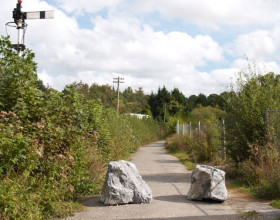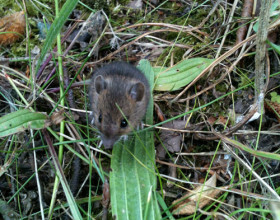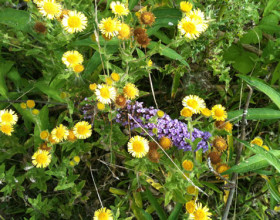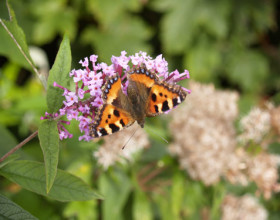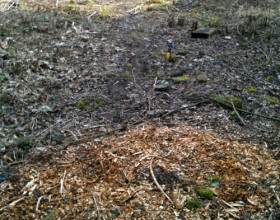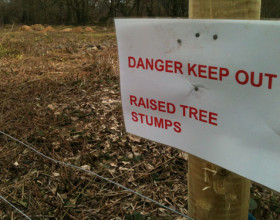” Raja had been walking the hills and paths of the Ramallah region for more than forty years. When he began walking, before the Six-Day war of 1967, the appearance of the hills was largely unchanged from the time of Roman occupation, and it was possible for him to move more or less unimpeded among them; to conduct what in Arabic is known as sarha. In its original verb-form, sarha meant ‘to let the cattle out to pasture early in the morning, allowing them to wander and freely graze’. It was subsequently humanised to suggest the action of a walker who went roaming without constraint or fixed plan. One might think the English equivalent to be a ‘stroll’ or ‘amble’ or ‘ramble’, but these words don’t quite catch the implications of escape, delight and improvisation that are carried by sarha. ‘Wander’ comes close, with its word-shadow of ‘wonder’, as does the Scots word ‘stravaig’, meaning to ramble without set goals or destination, but best of all perhaps is ‘saunter’, from the French ‘sans terre’, which is a contraction of ‘a la saint terre’ meaning ‘to the sacred place’, i.e. ‘a walking pilgrimage’. Saunter and sarha both have the surface connotations of aimlessness, and smuggled connotations of the spiritual.”
From ‘The Old Ways’ by Robert MacFarlane
I often feel there’s a subtle tension within Wild Church walks, between the free spirit of sauntering and the discipline of taking a journey together in community. Pilgrims regularly go missing! (Though not permanently I am happy to say…) Caught up by in the wild spirit of wandering and wondering they are led along their own paths, pause to jump naked into the river or some other divinely inspired madness overcomes them. Sometimes we are reunited later and sometimes folks just go their own way, which as a walk guide I find kind of delightful and worrying. Periodically I receive feedback about how people wish Wild Church events were more structured, or less structured, or different structured… but my own sense is that Wild Church partakes of the Mystery, keeps changing and is endlessly unexpected.
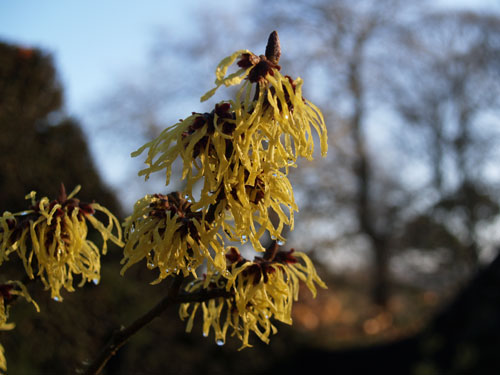 This was certainly true of our most recent couple of events, each of which started from St. Mary’s Church, Dartington. The first, on Saturday 21st January, was rather special by virtue of Wild Church being included for the first time in the Week of Prayer for Christian Unity. Thanks to the organiser, Joy Hanson, we became one of nine Totnes area churches, which was rather wildly surprising and a beautiful expression of unity all by itself. It also meant that a diverse and good sized group of people from different churches came together and bravely explored being a wandering church community together for an afternoon. Our silent walk took us from the new (nineteenth) century church of St. Mary’s to the ancient yew at the heart of the Dartington Estate beside the ‘old’ (fourteenth century) church tower. We lost a few folks along the way as usual, as they paused to wonder at new plantings or delight in the scented witch hazels, but remarkably most of us did end up back at the Church Hall for tea & lively conversation.
This was certainly true of our most recent couple of events, each of which started from St. Mary’s Church, Dartington. The first, on Saturday 21st January, was rather special by virtue of Wild Church being included for the first time in the Week of Prayer for Christian Unity. Thanks to the organiser, Joy Hanson, we became one of nine Totnes area churches, which was rather wildly surprising and a beautiful expression of unity all by itself. It also meant that a diverse and good sized group of people from different churches came together and bravely explored being a wandering church community together for an afternoon. Our silent walk took us from the new (nineteenth) century church of St. Mary’s to the ancient yew at the heart of the Dartington Estate beside the ‘old’ (fourteenth century) church tower. We lost a few folks along the way as usual, as they paused to wonder at new plantings or delight in the scented witch hazels, but remarkably most of us did end up back at the Church Hall for tea & lively conversation.
Our latest event, on Sunday 12th February, was unexpected in a very different way. It was a chilly weekend with a flurry of snow on the day before and I thought I might be walking alone! But just four of us gathered under the lime tree in the Dartington church yard, beside the snowdrops and the first few celandines. All went well as we set off across the fields, through the woods, past the budding pussy willows beside the river and towards a wild willow community I have often wandered in, beside the mill at Staverton. To outer eyes this may have appeared just a piece of waste ground, but for me, during many hours spent here ‘a la saint terre’, it has indeed been a sacred ground. Here I have sat still among the buddleia watching countless butterflies bask in the sunshine. Here, in deep quiet, I’ve seen rabbits and mice come out to feed and innumerable birds call to each other among the web of branches. Here I’ve felt heartened to discover that out of the ruins of broken tarmac, concrete and glass can grow new life in abundance. This is a place I’ve returned to throughout the travail of divorce, to be reassured that natural beauty can flourish in even the most unpromising looking landscape.
I don’t think we were the only ones shocked that day, to discover that every living plant there had been razed to the ground. The willows, alders and many other young trees were reduced to nothing more but stumps and piles of wood chips. I wondered where the birds, rabbits and mice had gone as they lost their homes during these freezing February days? I was very sad personally because of what this place had meant to me, but also it seemed to express something about how we as human beings often treat others unkindly, human and more than human, in both practical and more subtle ways. How any of us can become disheartened and disconnected, and cease to truly see and respect the lives and ways of others, such that it may become too easy to threaten or destroy what they hold dear. In our secular culture, I feel this is especially true of religion and spirituality, which are routinely belittled. I include myself here, I too have that capacity to fail to pay attention and trample rough shod over other people’s sacred ground and this unexpected pilgrimage was a wake up call for me to pay attention more fully to that which I find most different or unappealing and try to understand what it might mean for those who wander within it in delight.


